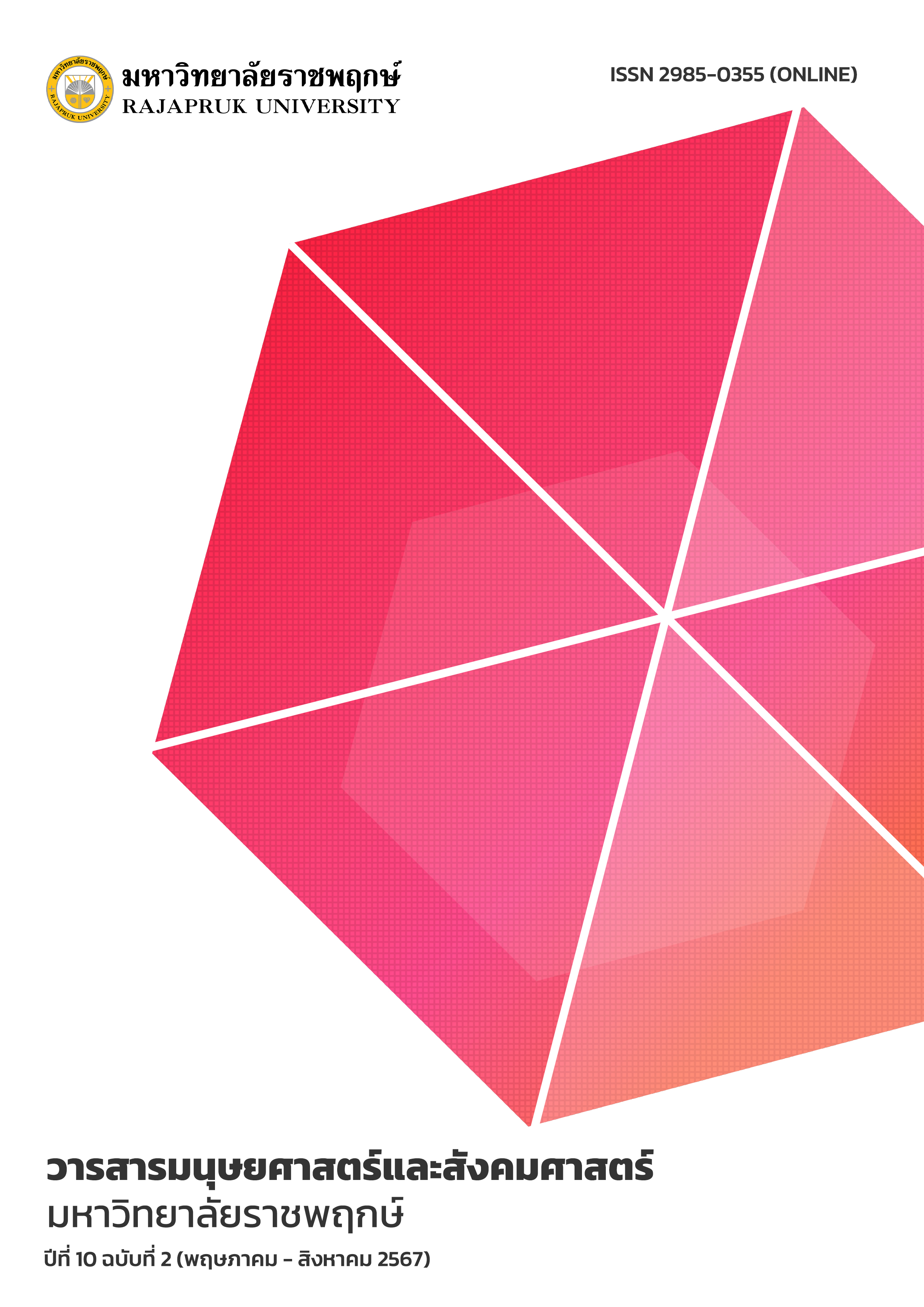The Guidelines for the Development of Digital and Information Technology Management of The Office of the Education Council
Main Article Content
Abstract
ABSTRACT
The Objective of this research were 1) to comparatively study the gap between expectation and reality according to the Office of the Education Council’s development plan in B.E. 2565 and 2) to craft the guidelines for the development of digital and information technology management of the Office of the Education Council. In conducting this research, quantitative and qualitative methods have been used. The number of participants in the quantitative study was 143 persons, and the interviewees were three persons from the group of executive officers. Research tools are the questionnaire with IOC value between 0.67 - 1.00 and interview question forms. The statistical methods used in the analysis were Mean, PNI (Priority Needs Index) and PNI Modified value.
The results of the research revealed that 1) the most significant gap between the expectation and the reality of the development plan is the database development for planning an effective education policy (PNI Modified = 0.38) and 2) the guidelines for the development of digital and information technology management of the Office of the Education Council are human resource development with the focused area on digital literacy, the improvement of the procurement process and the acceptance of E-Documents and E-Signature.
Article Details
References
กระทรวงศึกษาธิการ. (2546). กฎกระทรวง แบ่งส่วนราชการสำนักงานเลขาธิการสภาการศึกษา กระทรวงศึกษาธิการ พ.ศ. 2546 อาศัยตามความในมาตรา 8 และมาตรา 11 แห่งพระราชบัญญัติระเบียบบริหารราชการกระทรวงศึกษาธิการ พ.ศ.2546. กรุงเทพฯ: กระทรวงศึกษาธิการ.
กระทรวงศึกษาธิการ. (2560). กรอบทิศทางแผนการศึกษาแห่งชาติ พ.ศ. 2560 – 2574 สำนักงานเลขาธิการสภาการศึกษา กระทรวงศึกษาธิการ. กรุงเทพฯ: กระทรวงศึกษาธิการ.
กระทรวงศึกษาธิการ. (2563). แผนปฏิบัติการดิจิทัลเพื่อการศึกษา กระทรวงศึกษา พ.ศ. 2563 – 2565 กระทรวงศึกษาธิการ. กรุงเทพฯ: กระทรวงศึกษาธิการ.
กระทรวงศึกษาธิการ. (2565). แผนเพิ่มประสิทธิภาพ ประจำปีงบประมาณ พ.ศ. 2565 สำนักงานเลขาธิการสภาการศึกษา กระทรวงศึกษาธิการ. กรุงเทพฯ: กระทรวงศึกษาธิการ.
ธรรมนิตย์ สุมันตกุล. (2557). ทฤษฎีทางเลือกนโยบายสาธารณะ: หลักการพื้นฐาน. สืบค้นจาก https://www.krisdika.go.th/data/activity/act236.pdf
ติน ปรัชญพฤทธิ์. (2556). ศัพท์รัฐประศาสนศาสตร์. พิมพ์ครั้งที่ 12. กรุงเทพฯ : สำนักพิมพ์แห่งจุฬาลงกรณ์มหาวิทยาลัย.
นภาวรรณ สุขดี และ พรเทพ รู้แผน. (2559). การศึกษาปัญหาและความต้องการในการบริหารเทคโนโลยีสารสนเทศของสถานศึกษา สังกัดสำนักงานเขตพื้นที่การศึกษาประถมศึกษาพระนครศรีอยุธยา เขต 1. วารสารวิจัยราชภัฏกรุงเก่า, 3(3). มหาวิทยาลัยราชภัฏพระนครศรีอยุธยา.
สุธินี อัตถากร. (2560). ทฤษฎีทางเลือกสาธารณะ : ฐานคติและการนำไปประยุกต์ใช้ในการปรับปรุงการบริหารภาครัฐของไทย. วารสารการจัดการภาครัฐและเอกชน. 24(1), (36-37).
สำนักงานเลขาธิการสภาการศึกษา. (2565). คำสั่งสำนักงานเลขาธิการสภาการศึกษาที่ 233/2565 ลงวันที่ 21 ตุลาคม 2565 เรื่อง การจัดโครงสร้างส่วนราชการและการแบ่งงานภายในสำนักงานเลขาธิการสภาการศึกษา. สืบค้นเมื่อวันที่ 12 มิถุนายน 2566 จาก http://backoffice.onec.go.th/uploaded2/Category/202210/20221020_InternalOrg.pdf.
สำนักงาน ก.พ. (2566). Digital Literacy คืออะไร. สืบค้นเมื่อวันที่ 8 มิถุนายน 2566 จากhttps://www.ocsc.go.th/DLProject/mean-dlp.
สำนักงานคณะกรรมการพัฒนาระบบราชการ. (2564). แนวทางการประเมินส่วนราชการตามมาตรการปรับปรุงประสิทธิภาพในการปฏิบัติราชการของส่วนราชการและองค์การมหาชน ประจำปีงบประมาณ พ.ศ. 2565 : องค์ประกอบที่ 2 การประเมินศักยภาพในการดำเนินงาน (Potential Base). สืบค้นเมื่อวันที่ 1 มิถุนายน 2566 จากhttps://www.opdc.go.th/file/reader/Qk80fHw2NTI5fHxmaWxlX3VwbG9hZA
สุวิมล ประทุม. (2555). การปรับปรุงประสิทธิภาพของระบบที่มีพื้นฐานข้อมูลขนาดใหญ่. วิทยานิพนธ์วิทยาศาสตร์มหาบัณฑิต, จุฬาลงกรณ์มหาวิทยาลัย.
สุวิมล ว่องวาณิช. (2548). กลยุทธ์ทางเลือกเพื่อพัฒนาวัฒนธรรมและสมรรถภาพการวิจัย และประเมินของครูมืออาชีพในฐานะผู้นำการเปลี่ยนแปลง ในการขับเคลื่อนสู่โรงเรียนฐานความรู้ : การวิจัยประเมินความต้องการจำเป็นแบบสมบูรณ์. คณะครุศาสตร์ จุฬาลงกรณ์มหาวิทยาลัย:กรุงเทพฯ. DOI : https://doi.nrct.go.th/ListDoi/listDetail?Resolve_DOI=10.14457/CU.the.2005.43
สุวิมล ว่องวาณิช. (2558). การวิจัยประเมินความต้องการจำเป็น (พิมพ์ครั้งที่ 3). กรุงเทพฯ: วี.พริ้นท์ (1991).
วราลี จิเนราวัต, หมิงซาน หลัว, ณุนนท์ ราชเสน และ หยาง ฟง (ริชาร์ด) (2565). การบริหารการศึกษาบิ๊กดาต้า : กรณีศึกษาสาธารณรัฐประชาชนจีนและการประยุกต์ใช้ในประเทศไทย. วารสารครุศาสตร์ จุฬาลงกรณ์มหาวิทยาลัย, 49(3). Doi: 10.1445/educu.2021.52
อรอุษา ปุณยบุรณะ และ ประเสริฐ อินทร์รักษ์. (2560). การบริหารเทคโนโลยีสารสนเทศและการสื่อสารของโรงเรียนสาธิต. Journal of Nakhonratchasima College, 11(2).
Bolisani, E. & Scarso, E. (1999). Information technology management: a knowledge-based perspective, Technocation 19(1999), 209-217. https://doi.org/10.1016/S0166-4972(98)00109-6
Brock, V., & Khan, H. U. (2017). Big data analytics: does organizational factor matters impact technology acceptance? Journal of Big Data, 4(1). https://doi.org/10.1186/s40537-017-0081-8
Cetera, W., Gogołek, W., Żołnierski, A., & Jaruga, D. (2022). Potential for the use of large unstructured data resources by public innovation support institutions. Journal of Big Data, 9(1). https://doi.org/10.1186/s40537-022-00610-6
Daki, H., el Hannani, A., Aqqal, A., Haidine, A., & Dahbi, A. (2017). Big Data management in smart grid: concepts, requirements and implementation. Journal of Big Data, 4(1). https://doi.org/10.1186/s40537-017-0070-y
Deshmukh, D., & More, A. (2017). Applying Big Data in Higher Education International. Journal of Innovative Research in Computer and Communication Engineering Applying Big Data in Higher Education. https://doi.org/10.15680/IJIRCCE.2017
Laney, D. (2013). Big Data Means Big Business. Retrieved on June, 24th, 2023, from http://www.gartner.com/technology/about/ombudsman/omb_guide2.jsp.
Ma, T. J., Garcia, R. J., Danford, F., Patrizi, L., Galasso, J., & Loyd, J. (2020). Big data actionable intelligence architecture. Journal of Big Data, 7(1). https://doi.org/10.1186/s40537-020-00378-7
Matto, G. (2022). Big Data Analytics Framework for Effective Higher Education Institutions. Tanzania Journal of Engineering and Technology, 41(1), 10–18. https://doi.org/10.52339/tjet.vi.768
Mittal, P. (2020). Big data and analytics: a data management perspective in public administration. International Journal of Big Data Management, 1(1), 1. https://doi.org/10.1504/ijbdm.2020.10032871
Mosley, Mark., Brackett, M. H., & Data Management Association. (2010). The DAMA guide to the data management body of knowledge (DAMA-DMBOK guide). Technics Publications.
Nawaz, A., Muhammad Kundi, G., Khan, I., & Pakhtoon Khwa, K. (2010). Digital literacy: An analysis of the contemporary paradigms. Journal of Science and Technology Education Research 1(2), 19 - 29, Retrieved on July, 1st, 2023, from https://academicjournals.org/article/article1379488135_Nawaz%20and%20Kundi.pdf
Nda, R. M., & Tasmin, R. bin. (2019). Big Data Management in Education Sector: an Overview. Path of Science, 5(6), 5009–5014. https://doi.org/10.22178/pos.47-6
Nguyen, A., Gardner, L., & Sheridan, D. P. (2020). Data Analytics in Higher Education: An Integrated View. Journal of Information Systems Education, 31(1), 61–71.
Razali, N. A. M., Malizan, N. A., Hasbullah, N. A., Wook, M., Zainuddin, N. M., Ishak, K. K., Ramli, S., & Sukardi, S. (2021). Opinion mining for national security: techniques, domain applications, challenges and research opportunities. Journal of Big Data, 8(1). https://doi.org/10.1186/s40537-021-00536-5
Riahi, Y., & Riahi, S. (2018). Big Data and Big Data Analytics: concepts, types and technologies. International Journal of Research and Engineering, 5(9), 524–528. https://doi.org/10.21276/ijre.2018.5.9.5
Yamane, T. (1973). Statistics: An Introductory Analysis. 3rd Edition, Harper and Row, New York.
Ye, Y., Zhang, Y., & Zhu, Y. (2022). Exploring the form of big data products and the supporting systems. Journal of Big Data, 9(1). https://doi.org/10.1186/s40537-022-00604-4
Yunita, A., Santoso, H. B., & Hasibuan, Z. A. (2022). ‘Everything is data’: towards one big data ecosystem using multiple sources of data on higher education in Indonesia. Journal of Big Data, 9(1). https://doi.org/10.1186/s40537-022-00639-7.


